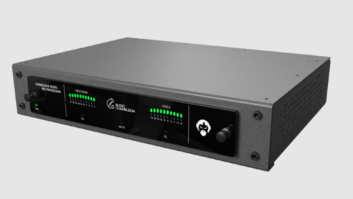In an age when source material is coming into stations in various compressed audio formats, how can facilities keep up the audio quality?
Elenos Sales Director Mary Ann Seidler cautioned engineers in the room at the IEEE here in Alexandria, Va. About overuse of audio compression, which can contribute to the degradation of audio.
“Be careful about how you use audio compression. It’s great tool, but it can be overused,” according to Seidler.
Audio codecs are in a number of products that stations use these days, like smartphones, remote studios, smartphone apps, STL links, automation systems and satellite feeds.
Seidler referenced a Harman study to determine if young people care about audio quality. The result, she said, showed that they do. As an experiment, she asks strangers in airports who are wearing Dr. Dre headphones why they bought them. Usually the young people wearing them say it’s because of the good audio quality, not just as a fashion statement.
“In radio, we’re spending a lot of money to make sure we have good audio quality. It’s too easy to turn us off,” she said, meaning as radio is one of many options in the digital dash. She has suggestions for how a station can protect its audio quality in the airchain. Those include testing an airchain, insisting that ad agencies transmit spots at high bit-rates and minimizing compression in STLs.
Alexis Hauk contributed to this report.












